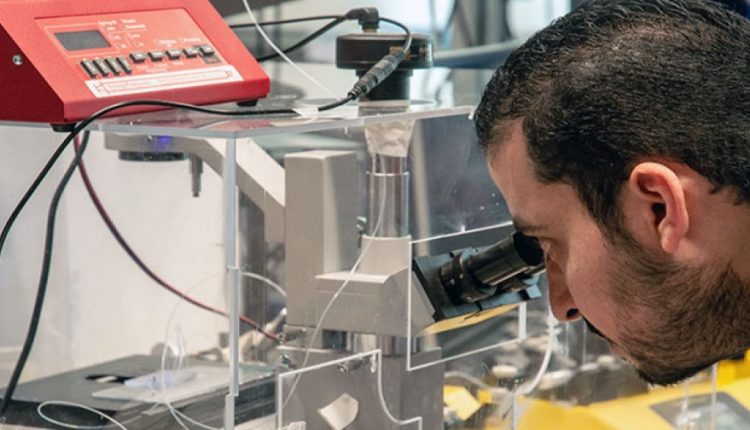The regeneration and regrowth of damaged human body tissue may sound like the stuff of superhero origin stories. But it’s not gamma radiation like the Hulk experienced, or even a genetic mutation ala the X-men’s Wolverine, that could make rapid healing a reality in hospitals across the world.
It’s possible to inject cells into tissue to stimulate regrowth. But cells on their own are delicate and tend not to survive when injected directly into the body.
Researchers at the University of British Columbia Okanagan have developed an automated encapsulation device that encases cells in a microgel using a specialized blue laser and purifies them to produce a clean useable sample in just a few minutes.
Encapsulated in coating that protects them from physical damage and the body’s own immune system, the cells can then be injected into the body to heal anything from broken bones to torn ligaments. During testing, more than 85% of the cells survived. The process is scalable, potentially permitting the repair of entire organs someday.
“The idea of injecting different kinds of tissue cells is not a new one,” says Keekyoung Kim, assistant professor of engineering at UBC Okanagan and study co-author. “It’s an enticing concept because by introducing cells into damaged tissue, we can supercharge the body’s own processes to regrow and repair an injury.”
In addition to developing a system that’s quick and efficient, the equipment is made up of readily available and inexpensive components, according to Mohamed Gamal, doctoral student in biomedical engineering and study lead author.
The team is already looking at the next step, which will be to embed different kinds of stem cells — cells that haven’t yet differentiated into specific tissue types — into the microgels alongside specialized proteins or hormones called growth factors. The idea would be to help the stem cells transform into the appropriate tissue type once they’re injected.
Source: University of British Columbia

